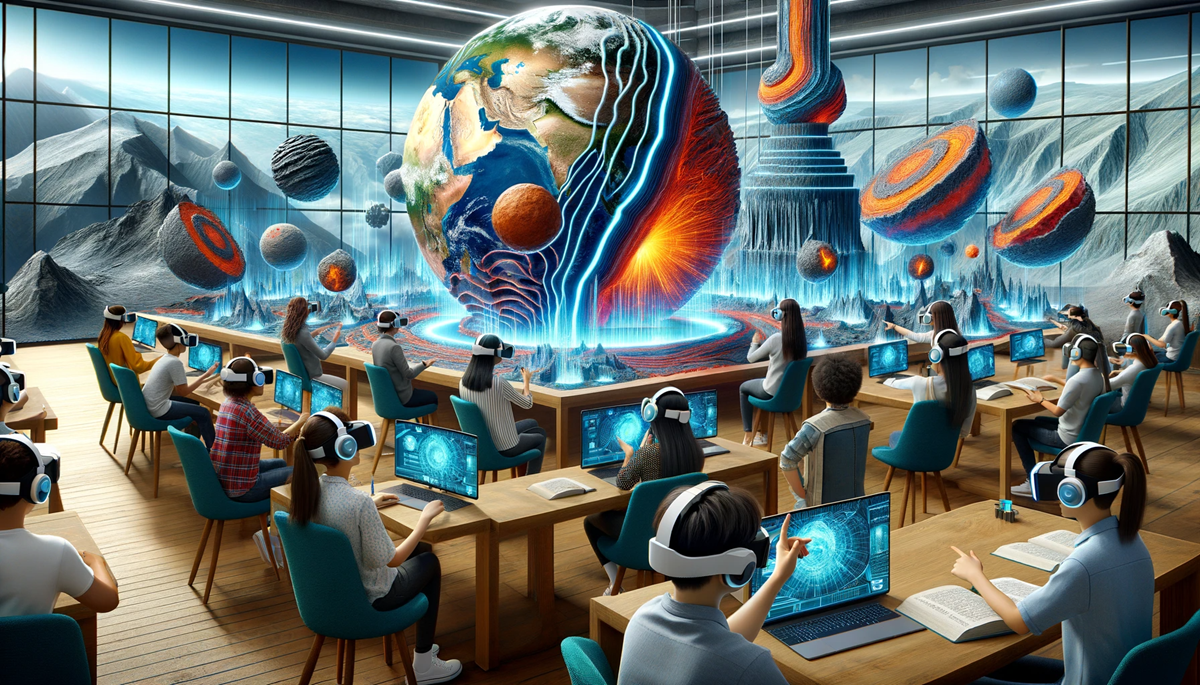Plate Tectonics Education in the Virtual Realm

Plate tectonics is synonymous with Earth’s colossal puzzle pieces moving around. These dynamic interactions among Earth’s lithospheric not only shape landscapes but also influence seismic hazards, resource explorations as well and environmental changes.
Amazing, right? Now, think of bringing this saga to life with virtual reality. Delve into Earth’s history, witness the monumental shifts, and experience the seismic forces shaping our planet. It’s not merely a plate tectonic education, indeed an immersive journey through time.
Often, educators explain the theory of plate tectonics to students who face the challenge of simplifying the intricate movements and interactions of tectonic movements to Earth’s topographical transformations, with virtual reality becoming the ultimate tool.
To make this voyage more exciting, we’ve compiled five innovative virtual reality resources with the potential to transform the learning experience for both students and educators alike.
Get ready to delve into the Earth’s dynamic story like never before!
Five Virtual Reality Resources Revolutionizing Plate Tectonics Education
Step into the future of learning with five Virtual Reality resources
Use Engaging Models and Simulations
Teachers can use interactive models and simulations to focus on the complexities of plate tectonic education pivotal in transforming Earth’s dynamic geological attributes.
Simply put, virtual reality interactive and immersive endeavors have the capability to foster companions of geologists who are ready to embrace dynamically evolving planetary oscillations.
And, educators using a simulated environment, provide learners a virtual world where they can mold tectonic plates and see the significant interplay of plate boundaries along with Earth’s surface transformation.
Educators can integrate boundary dynamics simulators to create divergent, convergent and transforming plate interactions. And, as learners get hands-on experience in experimenting with aspects, they will better comprehend the nuanced geological outcomes from volcanic arcs to mid-ocean ridges and seismic waves.
Make Technology a Must in Study Plans
Integrating technological advancements like Virtual Reality into theory of plate tectonics elevates learning to new dimensions.
As learners delve through engaging simulations and analyzing real-time data, they comprehend a holistic overview of Earth’s dynamic evolution which simplifies the science behind plate boundaries and movements.
Also, teachers can use virtual reality technology adeptness to build an immersive and enthralling journey by:
Utilizing Simulation - Leveraging this to create and manipulate virtual landforms.
Use Virtual Reality Platforms - With VR labs it becomes easy to understand the collision of tectonic plates.
Establishing Augmented Reality - This can help in the tactical understanding of sample-gathering methods.
Connect Learning to Real-World Applications
Leveraging technology in learning empowers students to apply plate tectonics education to real-world applications, eventually nurturing critical thinking and global awareness.
Plus, by realizing contemporary concerns through a geoscientific lens, learners can become advocates of change who are ready to address Earth’s evolving dynamics.
With an approach like this, learners won’t just get access to immersive learning but will also handhold experience to mitigate hazards and forge sustainable solutions as trailblazers of tomorrow.
Besides, you can create VR labs where students can discover how plate boundaries help earthquake preparedness.
As an educator, you can also start from resource exploration where they get hands-on experience on mineral extraction, thereby connecting and understanding the relation between plate tectonics and resource management.
Inspire Learners by Connecting The Dots - Career Prospects
By associating plate tectonics with the right career options, educators motivate learners to foresee themselves as a future geoscientist, resource managers, researchers or environmental consultants.
And, as students connect theoretical concepts to real-world possibilities with VR experience, their curiosity transforms into career aspirations that act as an upthrust for the complete generation ready to explore Earth’s mysteries and simultaneously contribute to a sustainable future.
Moreover, this can be achieved by:
Organizing webinars featuring geoscientists from industries, academia, and federal agencies who share their experience on tectonic research, seismic hazard assessments, etc.
Association with geoscientific industries to discover resource exploration, disaster mitigation, and environmental assessments.
Opt virtual reality for higher education and organize geo-exploration competitions to make learning fun.
Learn with Games and Activities
Aside from experiential learning, games and activities prove to be a great way to explain the complexity of plate tectonics and its extensive impacts.
With intuitive puzzles, engaging classroom activities, virtual challenges, students themselves engage in the process of plate tectonics and geographical learnings.
Besides, when these activities are amalgamated with virtual reality experience, it provides an easy learning approach of complicated concepts like mountains formation, volcano making, and many other concepts.
Precisely, with hands-on exploration learners have a better understanding of the geological evolution.
The Takeaway:
With the education world evolving, it’s time to explore the amazing realm of our planet’s dynamic narrative through virtual reality. And, all this turned into a reality with iXR virtual reality labs.
Our team shed light on the inevitable aspects of creating virtual worlds, where learners not only improve their learnings but also nurture critical and tactical thinking skills.
The team at iXR labs plays a crucial role in reengineering tectonic plate learning into an immersive and interactive experience.
Our expertise in virtual exploration, augmented reality overlays, real-time interactivity, and hands-on simulation helps educators create dynamic, engaging and effective learning environments.




